Two top-tier systems have seamlessly integrated both hardware and software into the Battery Cycler Microcalorimeter solution:
- The TAM IV Microcalorimeter is an advanced analytical instrument designed to analyze the thermal behavior of samples at regulated temperatures.
- The BioLogic VSP-300 Potentiostat is a research-grade electrochemical analysis instrument for examining a material's electrical characteristics.
Software
The TAM IV Microcalorimeter and BioLogic VSP-300 Potentiostat are combined into a single integrated system by TAM Assistant, a straightforward and integrated software platform.
For researchers and scientists of all levels, the Battery Cycler Microcalorimeter solution is the ideal in-operando tool that delivers smooth system control and data analytics. TAM Assistant shortens testing times, expedites decision-making, and sheds light on recently discovered electrode and electrolyte material properties.
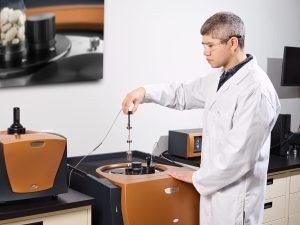
Image Credit: TA Instruments
Features and Benefits
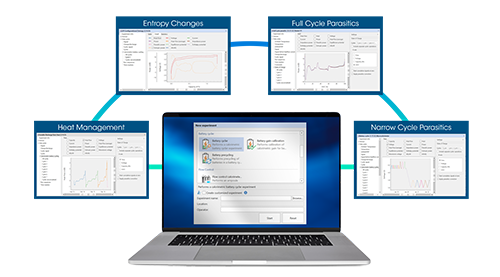
Image Credit: TA Instruments
Premium Integration
- Via a single software interface, the Battery Cycler Microcalorimeter solution offers smooth system control of the BioLogic VSP-300 Potentiostat and TAM IV
- Real-time data aggregation eliminates the need to wait for drawn-out tests to conclude before seeing preliminary findings
- The sophisticated data analytics of TAM Assistant software allows one-touch analysis for data visualization, producing quicker outcomes and fresh perspectives
Superior Productivity
- Concurrently cycles and measures the parasitic heat of several battery cells and forms factors at once (coin cells, pouch cells, and cylindrical cells)
- There are no wires to handle or manipulate, resulting in a user-friendly, attractive design that eliminates the need for specialist expertise and the hazards involved with undertaking risky operations by customizing OEM objects
Sensitive and Reproducible
- Increased temperature range from 4 °C to 150 °C to simulate practical uses
- Superior temperature stability and sensitivity for self-discharge readings
Calorimeters
Battery Calorimeters
Multicalorimeter

Image Credit: TA Instruments
When evaluating numerous small coin cells, the TAM IV 20mL Multicalorimeter improves sample throughput. Twelve 20 mL calorimeters can be accommodated in the TAM IV thermostat. This combination combines high sample throughput with great sensitivity, providing optimal versatility.
Macrocalorimeter
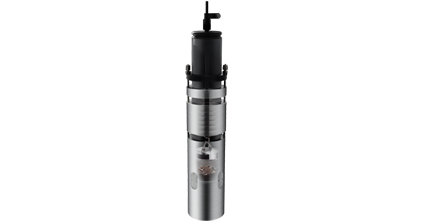
Image Credit: TA Instruments
Large-volume calorimeters like the TAM IV Macrocalorimeter are made to monitor heat flow accurately in larger samples. The design of this macrocalorimeter places the sample above the reference below, but for best results, the reference can be changed by the user. Larger cylindrical batteries can be tested with the macrocalorimeter.
Micro XL Calorimeter

Image Credit: TA Instruments
A large-cell precision calorimeter called the TAM IV Micro XL was created especially to help scientists measure the electrochemical reactions taking place inside battery cells. To create a safer battery with a longer shelf life and a higher energy density, it is essential to characterize these reactions.
The TAM IV Micro XL calorimeter expands upon the current TAM IV thermostat range, and when used in conjunction with other calorimeters, it will facilitate the advancement of pouch battery technologies.
Accessories
Battery Cycler Microcalorimeter Accessories
The calorimeters can be equipped with one or more battery lifters, depending on the size and type of battery of interest. Various battery types can be tested simultaneously with multiple combinations.
Coin Cell Battery Lifting Tool
Coin Cell Battery Lifting Tool tests CR2032 and CR2325 coin cell batteries in the TAM IV 20 mL Minicalorimeter, Multicalorimeter, or Microcalorimeter. It has a spring contact to safely and easily attach a coin cell sample.
For tandem thermo-electrochemical testing, internal wiring enables the coin cell battery sample to be directly linked to the suitable external load or charge/discharge instrument. The TAM Assistant software enables simultaneous monitoring of the electrochemical and thermoanalytical data in conjunction with the Biologic VSP-300 Potentiostat.
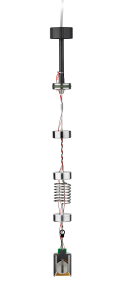
Image Credit: TA Instruments
18650 Battery Lifting Tool
To test 18650 battery cells in the TAM IV Macrocalorimeter, the 18650 Battery Lifting Tool was created. It has a solder-free connector to safely and easily attach an 18650 battery cell sample.
For tandem thermo-electrochemical testing, internal wiring enables the 18650-battery cell sample to be directly linked to the suitable external load or charge/discharge instrument. The TAM Assistant software enables simultaneous monitoring of the electrochemical and thermoanalytical data in conjunction with the Biologic VSP-300 Potentiostat.
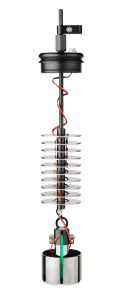
Image Credit: TA Instruments
Pouch Cell Battery Lifting Tool
The Pouch Cell Battery Lifting Tool is intended for use in the TAM IV Micro XL Calorimeter to test pouch cells with a maximum size of 50 mm × 94 mm. It has an adjustable solder-free connector that makes attaching a pouch cell sample simple and secure.
For tandem thermo-electrochemical testing, internal wiring enables the pouch cell sample to be directly connected to the suitable external load or charge/discharge device.
The TAM Assistant software enables simultaneous monitoring of the electrochemical and thermoanalytical data in conjunction with the Biologic VSP-300 Potentiostat.
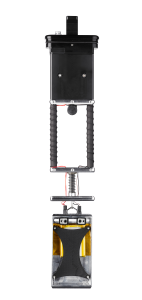
Image Credit: TA Instruments
VSP-300 Potentiostat
The BioLogic VSP-300 module is an electrochemical workstation with six slots that can be adjusted to accommodate one to six channel boards. It is a multichannel potentiostat. Along with the TAM IV and TAM IV Battery Lifting Tools, a VSP-300 Potentiostat completes the Battery Cycler Microcalorimeter Solution and provides vital information for battery testers.
Experiments
Battery Cycling Experiments
- Manual: Using the run sequence menu, one can create custom experiments by choosing actions, wait durations, and event markers
- Heat management (CCCV): Primarily utilized for thermal management applications, this technology measures heat flow throughout cycling. Constant current constant voltage (CCCV) parameters will be used to program various charging profiles (changing charge/discharge rates) in this manner
- Entropy changes: To achieve the greatest resolution into the structural and phase changes that take place during lithiation/delithiation, this method comprises a slow cycle (C/20) followed by a very slow cycle (C/100)
- First cycle reaction (SEI): Approach used to investigate the SEI formation reactions. This technique applies a small charging current in the low voltage region (usually below 3.0 V) where SEI formation occurs and then increases the charging current until the standard upper voltage limit is reached (typically 4.2 V)
- Full cycle parasitics: Measurement of parasitic power across the whole voltage range using full-cycle parasitics. Parasitics is an umbrella term for any non-reversible side reaction that contributes to battery deterioration
- Narrow cycle parasitics: A technique for measuring the parasitic power in a narrow voltage. If just one or more small voltage windows are important, this method is quicker
- Self-discharge: Experiment for determining the rate of self-discharge. This combines the thermal method of integrating the total heat produced over the open circuit duration with the standard methodology of tracking open circuit voltage over time and then discharging to determine the remaining capacity